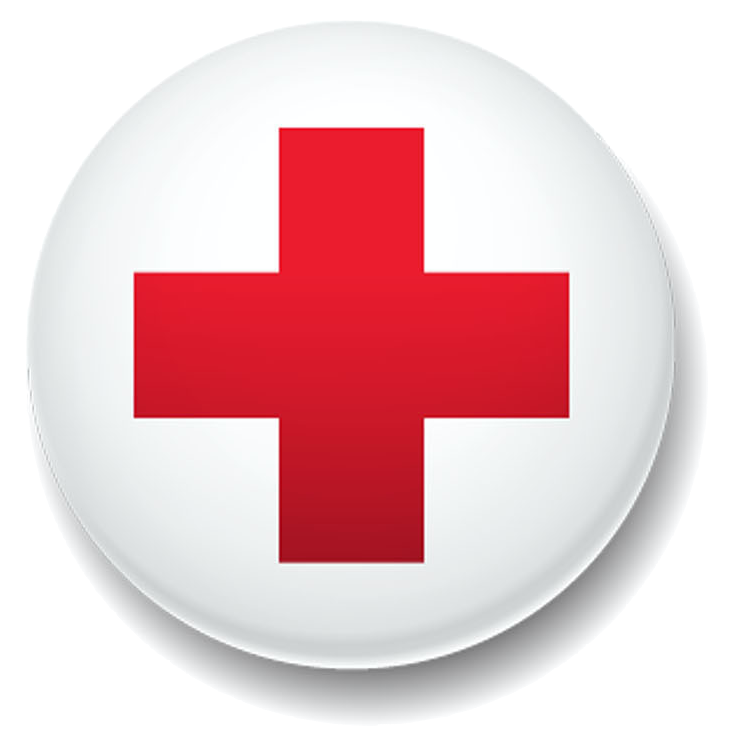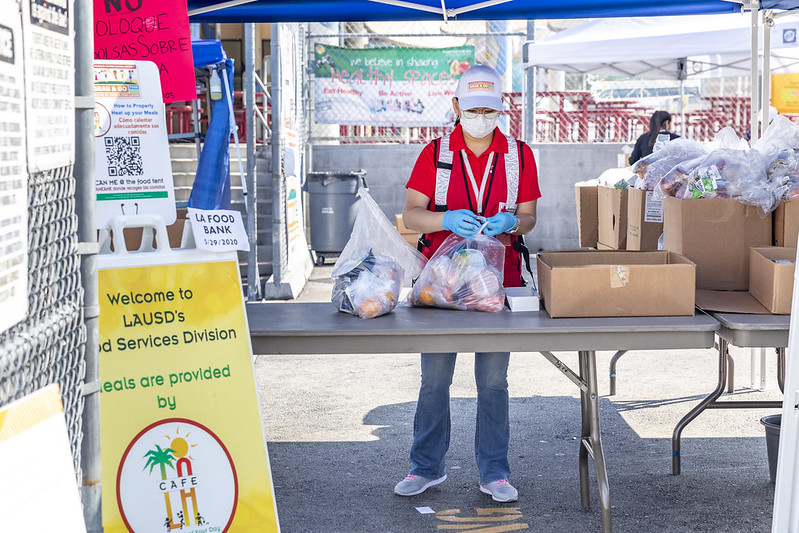By Roxanne Schorbach, Red Cross Visual Storyteller
On New Year’s Day, the American Red Cross Los Angeles Region proudly provided first aid services for the 133rd Tournament of Roses Parade.
Since 1964 the Red Cross has provided first aid services for the Rose Parade and related events surrounding the parade. It takes a great deal of planning and organization to bring together 18 first aid stations for five days.
“I couldn’t be prouder of our volunteers who helped make this Rose Parade a success,” said Paul Emmons, Operations Section Chief with 32 years of Rose Parade experience.
On New Year’s Day, 135 Red Cross first aid volunteers met at 4 a.m. at California Institute of Technology for a quick breakfast. Then, at 5 a.m. they assembled in teams and were transported to their station to set up their equipment and check radios. Finally, at 6 a.m., a formal radio check was made to each station by Pat Mulcahy, Communications Section Chief, and at that point, the stations were “Open for Business.”
“It was great to witness the culmination of months of training and planning through an extremely fluid environment impacted by COVID,” said Gerald Thomas, COO (Chief Operating Officer) of the Red Cross LA. “I continue to be amazed at our returning volunteers’ commitment, many of whom have been supporting this event for decades. It was also encouraging to see our youth team step in to support this event, as they had a 4 a.m. showtime, followed by a long day of work. This is a notable example of our motto – ’Sleeves up, hearts open, all in!’ ”
In the months leading up to the parade, the leadership team of about 15 Red Cross volunteers, each with a solid background in first aid, organized and set in motion the people who acted as the front-line eyes and ears for the Pasadena Fire Department.
“Even with the many challenges of COVID-19, we developed a team that knew the Rose Parade was going to happen, and were focused on success,” said Randy Ferman, Incident Commander for the First Aid Stations. “So, we worked on the details and made sure that everything that had to be done got done, even with the bumps and potholes along the way.”
Mike Kassarjian, Logistics Section Chief, was responsible for ensuring vehicles and equipment were in place to support the first aiders at each of their stations and get the volunteers to and from their stations.
“There is a surprising amount of equipment that is needed for the 18 first aid stations used on parade day.” Mike said, “In all, there are 13 stations along the parade route, five stations at float viewing, and we are responsible for three first-aid stations for pre-parade events.”
Of the 135 first aid volunteers, approximately 40% are first aid trained Red Cross Youth.
“The youth are trained in Basic Life Support (BLS), first aid, CPR, AED (Automated External Defibrillator), BBP (bloodborne pathogens), and oxygen delivery.” said Youth Coordinator Timothy Hokanson. “The retention rate of the youth volunteers generally runs about 60%, with 50% having an interest in working in the medical field professionally. The balance of the youth volunteers enjoys the first aid training and the volunteer experience they get working the Rose Parade.”
At the end of the parade and the conclusion of float viewing, Pat shared that it’s important to get it right the first time. “There are no do-overs. All of our volunteers performed magnificently — they all stepped up to the plate; they all showed up on time; and they did their jobs.”
Pat then gave me a sketch of the incidents from the day.
There were 63 emergency medical calls during the 2.5-hour parade; the vast majority were band members with heat exhaustion or leg-muscle cramping. Most of the patients were treated on scene, but some were taken back to the first aid station for additional treatment. In addition, some band members were unable to keep walking, and the Tournament of Roses provided People Mover’s for those unable to finish the parade. For the more advanced emergency cases, the Red Cross requested ambulances from the City of Pasadena on seven different occasions.
“It went pretty well, and we didn’t have any major difficulties during the day” Pat said. “Our first aiders did a spectacular job doing their job to protect the public in providing immediate emergency care until they were released or a call for more advanced care was made.”
Even after the parade ended and the floats were being staged for public viewing, Red Cross first aid teams continued to see patients. As crowds are dispersed, things happen – people slip, trip, fall, have trouble breathing, or need a bandage.
“Between the hours of 6 a.m. and 1 p.m. there were 112 medical incidents – higher than the usual number,” Paul said. “Of those, 11 involved a paramedic hospital transport by ambulance. During float viewing hours on Saturday afternoon and Sunday, an additional 25 medical incidents occurred with four paramedic transports to local hospitals.”
In closing, Christina Thomas, Director of Government Relations for the National Red Cross, who rode with me and Paul throughout the morning, said it best: Working in government relations; I rarely get to work with our volunteers outside of a natural disaster. But, seeing so many smiling young faces, up and ready to serve others before the sun came up and long into the day, was beyond inspiring. It gave me so much hope for not only the future of the Red Cross but the future of our country.”
Click here to see full 2022 Rose Parade album.





